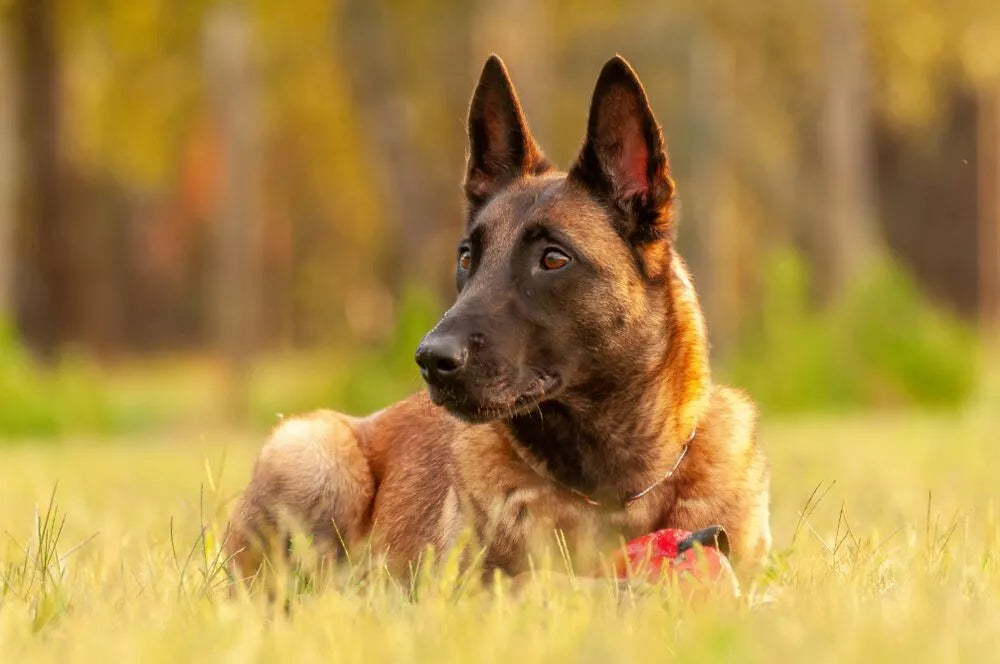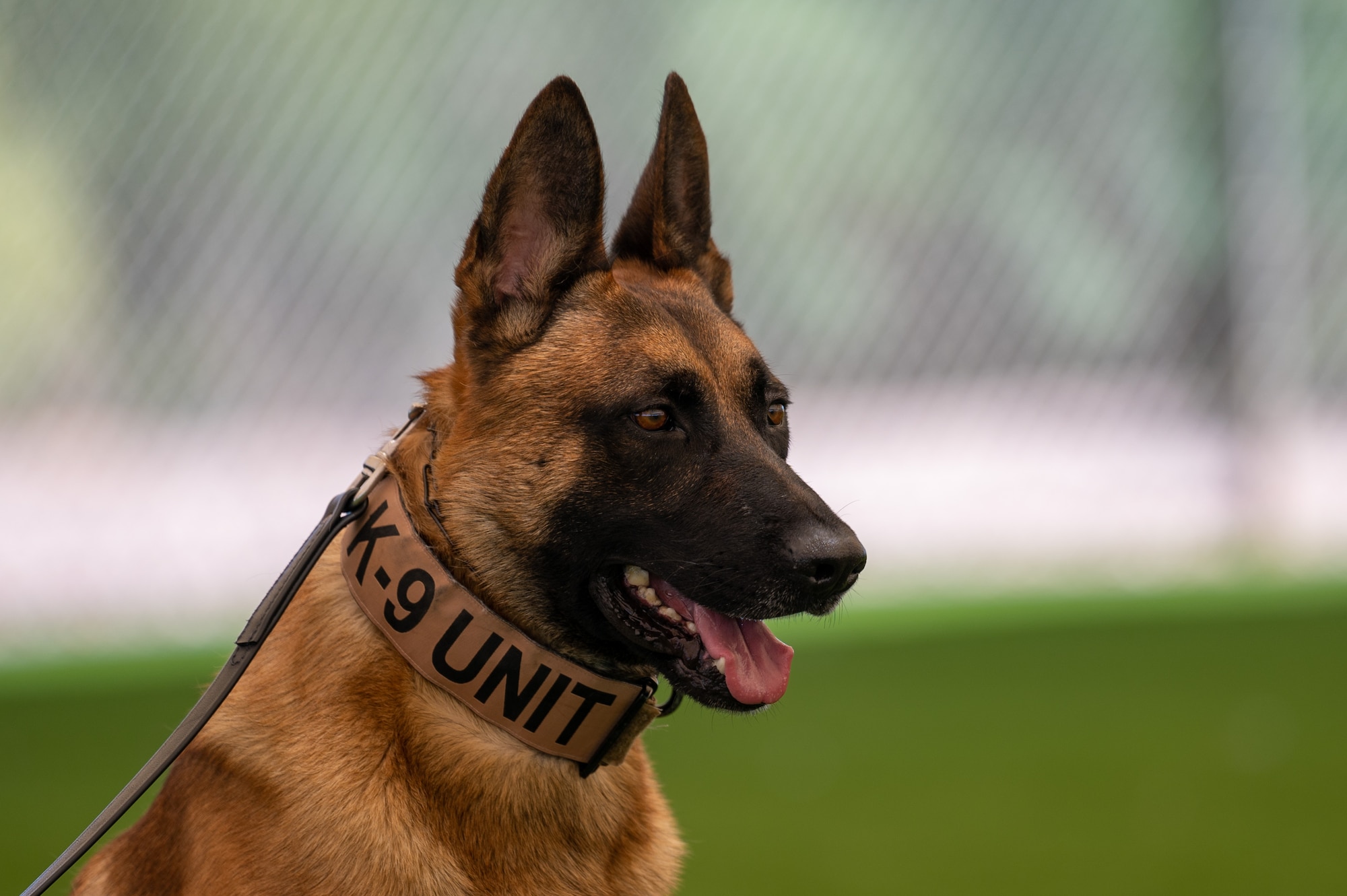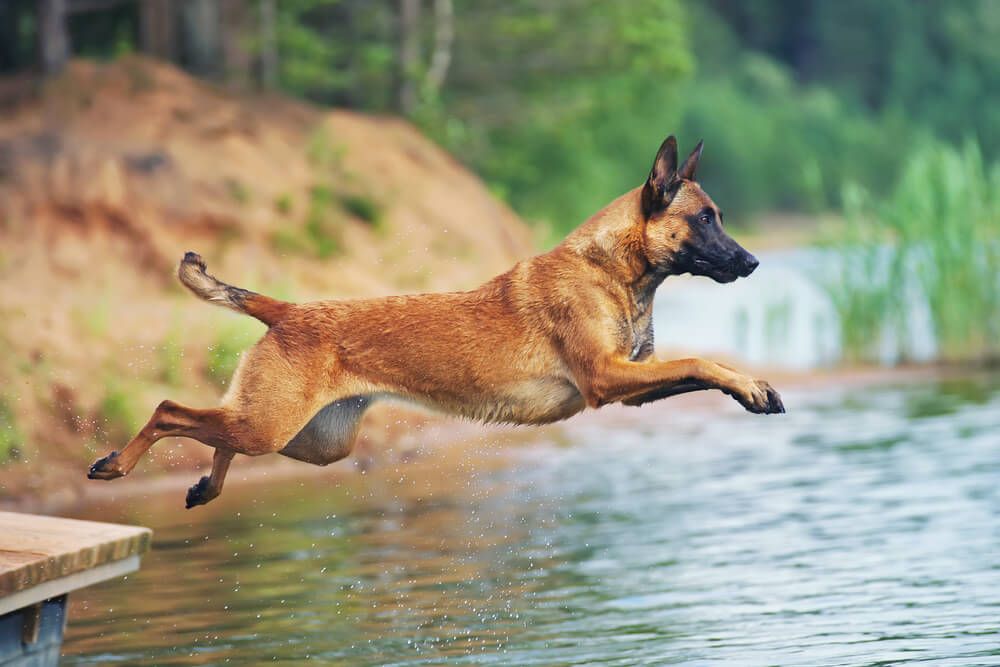The Belgian Malinois is a very active and smart dog breed. These dogs have a lot of energy and require plenty of exercise every day to stay healthy and happy. If they don’t get enough physical activity, they may become aggressive. Their strong instincts to chase and protect can lead to problems if not properly managed. It’s important to understand that your Malinois needs both mental and physical stimulation. For owners looking to provide consistent exercise, a dog running machine for sale can be a great solution to help meet their high energy needs.
Here’s a quick comparison of exercise needs for different breeds:
|
Breed Energy Group |
Example Breeds |
Average Daily Exercise Requirement |
|---|---|---|
|
High-Energy Breeds |
Belgian Malinois, German Shepherd, Border Collie, Siberian Husky |
1.5 to 2 hours of hard exercise (walks, runs, play, mental activities) |
|
Moderate-Energy Breeds |
Labrador Retriever, Boxer, Cocker Spaniel |
1 to 1.5 hours of daily activities (walks, play, training) |
|
Low-Energy Breeds |
Bulldog, Basset Hound, Shih Tzu |
30 minutes to 1 hour of light activities (easy walks) |
By understanding these traits and considering tools like a dog running machine for sale, you can help your Malinois stay happy and well-exercised without becoming aggressive.

Key Takeaways
-
Belgian Malinois need 1.5 to 2 hours of exercise each day. This helps them stay healthy and not become aggressive.
-
Training and socializing them early can stop aggressive behavior. It also helps create a strong bond with them.
-
Their strong instincts for hunting and guarding need careful management. Positive reinforcement is important too.
-
Playing games and training gives them mental stimulation. This keeps their minds sharp and helps reduce bad behavior.
-
A dog running machine offers safe and steady exercise. It meets their high energy needs.
Belgian Malinois Traits
Energy Levels
The Belgian Malinois is a very energetic dog. It needs a lot of exercise every day. You should try to give it at least two hours of activity daily. This can include walks, runs, and playtime. If you don’t provide enough exercise, your Malinois might become hyperactive or have behavior problems. Their high energy makes them playful, but it can also cause them to bark a lot and chase things.
Here are some important traits about their energy levels:
-
Highly intelligent: Malinois are smart dogs that enjoy mental challenges.
-
Playful and adventurous: They like to do different activities to stay engaged.
-
Sensitive: They need careful handling and early socialization to avoid aggression or fear.
-
Strong prey drive: Malinois might chase small animals, like cats or even kids, if not trained well.
If they don’t get enough exercise and mental activity, your Malinois may become more reactive or aggressive. Good training and socialization are very important to control these behaviors.
Prey and Guarding Instincts
The Belgian Malinois has strong instincts to chase and guard. They were originally bred for herding and protection. These dogs naturally want to protect their home and family. Their bodies help them have great senses, like sharp vision, hearing, and smell. This helps them notice threats quickly and react.
Here are some key points about their prey and guarding instincts:
-
Protective nature: Malinois are very protective of their families, making them great guard dogs.
-
Reserved with strangers: They can be careful around new people but are not usually aggressive unless provoked.
-
Aggressive with strange dogs: Without proper socialization, they might act aggressively toward unfamiliar dogs.
-
Always 'on duty': Malinois are serious and alert, often suited for police and military jobs.
Their strong prey drive means they may chase moving things or people. This can be a problem if not managed with training. Early socialization helps them tell the difference between real threats and harmless people.
Causes of Aggression

Knowing why Belgian Malinois can be aggressive is important for good ownership. Many things can cause aggressive behavior, like genetics, training, and the environment.
Genetics and Instincts
Genetics are a big part of how a Malinois acts. Some genetic traits can make these dogs more likely to be aggressive. For example, studies show that the dopamine transporter variable number tandem repeat (DAT-VNTR) polymorphism is connected to aggression in Belgian Malinois. The '1' allele and homozygous 1/1 genotype are linked to problems like seizures and sudden aggression. All dogs with seizures in the study had this genotype, showing a strong link to aggression.
-
Key points about genetics and aggression:
-
The DAT-VNTR genotype in Malinois is different from other breeds, with more 1/1 genotypes.
-
Aggression can happen suddenly and without warning, especially in American Belgian Malinois.
-
Traits linked to this genotype include being very alert and watchful, which may show stress.
-
These genetic traits show why it’s important to know your Malinois's background. They might need extra care to stop aggressive behaviors.
Training and Socialization
Training and socialization are very important for a Malinois's behavior. Early socialization can help stop cautious or aggressive actions, especially in guard breeds like the Malinois. You should start training when they are eight weeks old. Expose your dog to different people, places, and experiences. This helps them be less wary of strangers and grow into well-adjusted adults.
-
Effective training practices include:
-
Using high-value rewards to encourage your dog during training.
-
Keeping a clear pack structure and leadership at home.
-
Letting your dog do activities to burn off extra energy before training.
-
Bad training can cause behavior issues, including aggression. For example, using harsh tools like shock collars can make aggression worse instead of better. Positive reinforcement works better, helping your Malinois connect triggers with good experiences. Being consistent and patient is key; there are no quick fixes.
Environmental Factors
The environment can also affect aggression in Belgian Malinois. Some studies say there are no big differences in aggression between dogs living indoors or outdoors. However, the quality of the relationship between the dog and owner, along with the owner's training knowledge, is very important. For example, a Malinois moving from a rural area to a city may show anxiety-based aggression until they get used to the new place.
-
Consider these environmental aspects:
-
Changes in surroundings can temporarily change aggression levels, especially with poor socialization and training.
-
Things like who lives in the house and the owner's experience also affect aggression levels, showing it’s a mix of factors.
-
By knowing these causes of aggression, you can take steps to manage your Malinois's behavior better. Good training, socialization, and understanding genetic traits will help you raise a happy and well-adjusted companion.
Importance of Exercise

Daily Exercise Needs
Regular exercise is very important for your Belgian Malinois. These dogs need a lot of physical activity. They require at least 60 to 90 minutes of hard exercise each day. Activities like long walks, jogging, fetch, and frisbee help them use up their extra energy. If they don’t get enough exercise, your Malinois might start chewing furniture or digging holes.
Here are some good activities to meet your Malinois's exercise needs:
-
Long walks: Try to go for at least 30 minutes to an hour.
-
Jogging: This is a great way to bond and keep them fit.
-
Fetch: A fun game that lets them run and retrieve.
-
Agility training: This gives them physical exercise and mental challenges.
Adding these activities to your daily routine will help keep your Malinois fit and stop bad behaviors.
Mental Stimulation
Mental exercise is just as important as physical exercise for your Malinois. Keeping their minds busy can help reduce aggression and improve their behavior. Activities like scent work, puzzle toys, and obedience training are great for their minds.
Consider these good ways to provide mental stimulation:
-
Scent work: Use their strong noses to find hidden treats or toys.
-
Puzzle toys: Toys that give treats encourage them to solve problems.
-
Agility training: This mixes physical and mental work, keeping them focused and active.
Using positive reinforcement during these activities helps your Malinois learn and grow. Avoid harsh training methods because they can cause fear and anxiety. Instead, stick to consistent routines and reward good behavior. By giving both daily mental and physical activities, you can help your Malinois use their energy in positive ways. This leads to a happier and more balanced dog.
Dog Running Machine for Sale

A dog running machine can really help your Belgian Malinois. These machines give a safe place for exercise, which is great for active breeds. Here are some important benefits of using a dog running machine:
-
Consistent Exercise: You can make sure your Malinois gets enough exercise, no matter the weather.
-
Cardiovascular Fitness: Using it regularly helps keep their heart healthy and muscles strong.
-
Mental Stimulation: You can add commands and sensory activities during treadmill time, keeping your dog interested.
-
Behavioral Management: A running machine helps stop problems that come from not enough exercise or mental activity.
-
Complementary Training: It can improve outdoor fun and special training needs.
-
Positive Reinforcement: Using a treadmill lets you use positive methods, lowering stress and helping them learn better.
Using a dog running machine can really improve your Malinois's exercise routine. Professional trainers often use treadmills in their programs to build strength and endurance. They use these machines when the weather is bad or when there isn’t enough time for outdoor exercise. This way, they ensure regular exercise while keeping safety in mind with features like emergency stop clips.
Taking care of your Malinois's energy and aggression is very important for a happy dog. Regular exercise is a big part of this. Studies show that dogs getting 7 or more hours of exercise each week are three times less likely to be aggressive. Doing activities like agility training can lower fear-based aggression by 35%.
To help your Malinois do well, think about these key tips:
-
Give 1-2 hours of hard exercise every day.
-
Do obedience training to create a strong bond.
-
Use a treadmill for regular indoor workouts.
By focusing on these things, you can help your Malinois be a good companion.

FAQ
What should I do if my Malinois shows aggression?
If your Malinois acts aggressively, talk to a trainer. Getting help early is very important. Use positive reinforcement and socialization to teach your dog the right behaviors.
How much exercise does a Malinois need daily?
A Belgian Malinois needs at least 1.5 to 2 hours of exercise every day. Activities like running, playing fetch, and agility training are great for their high energy.
Can Malinois be good family pets?
Yes, Malinois can be great family pets. They are loyal, protective, and smart. Good training and socialization from a young age help them become good companions.
How can I socialize my Malinois effectively?
Socialize your Malinois by introducing them to different people, places, and experiences. Start early and use positive reinforcement to encourage calm behavior in new situations.
Are there specific training methods for Malinois?
Yes, use positive reinforcement methods to train your Malinois. Reward good behavior with treats or praise. Being consistent and patient is very important for training this breed.










0 Comments